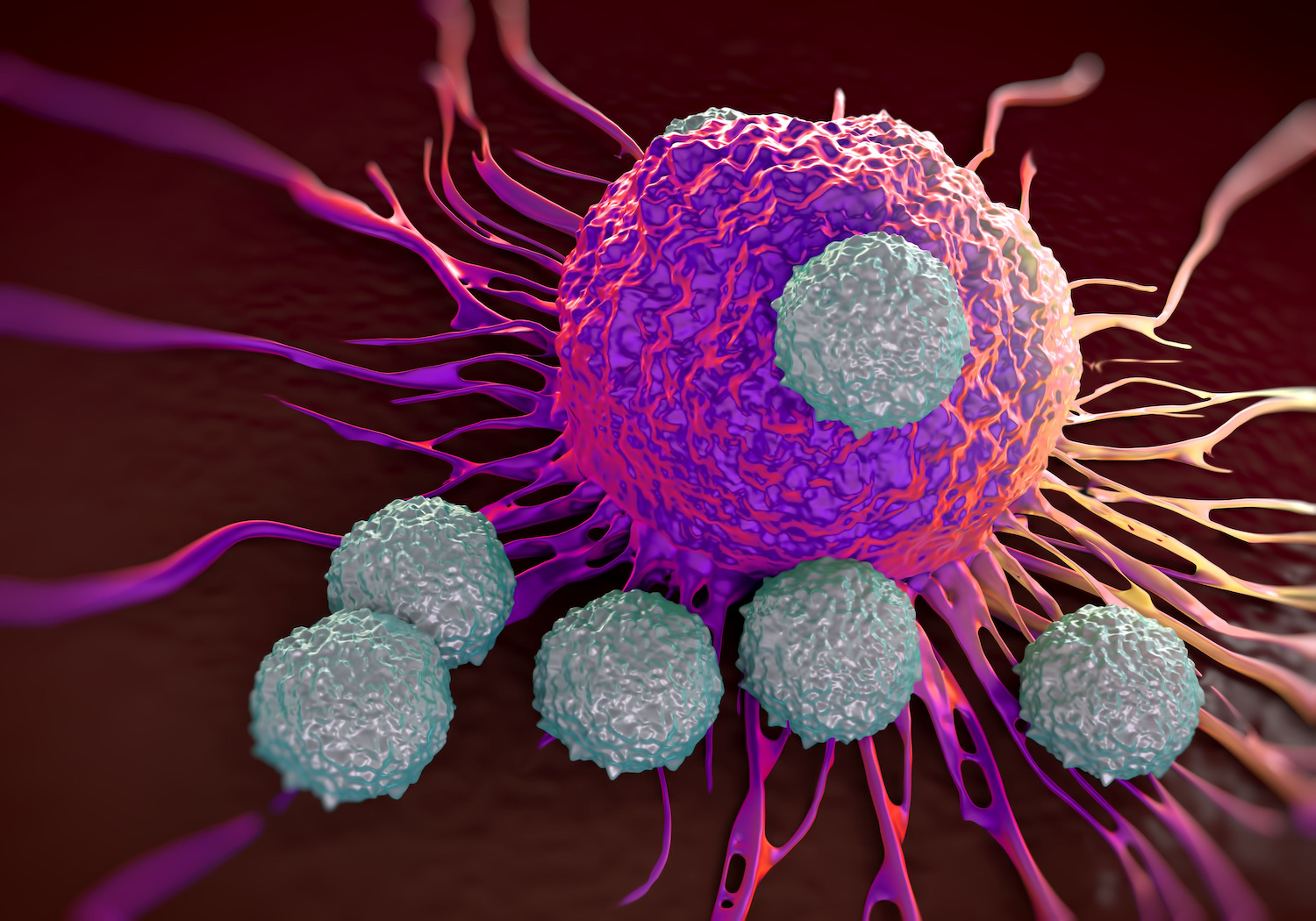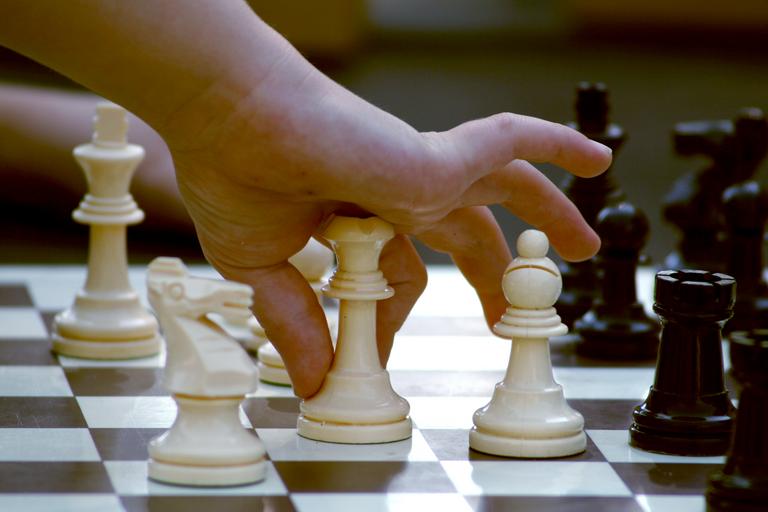Problems with no solution: From math to politics, some things humans cannot solve

- Humans are natural problem solvers, but sometimes, no amount of thoughtfulness, hard work, or understanding will transform an intractable problem into a resolvable one.
- There are multiple examples but, in this essay, we focus on three: the Riemann hypothesis, the problem of aging and cancer, and willful ignorance.
- These examples also serve as a metaphor for the greater truth that we control far less than we think we do, and that we must become comfortable with that discomforting fact.
Humans are problem solvers. Though our species name is Homo sapiens (Latin for “wise man”), perhaps a better one would be Homo problematis solvendis (“problem solving man”). If there’s a mountain, we’ll climb it; if there’s a moon, we’ll fly to it; if there’s a disease, we’ll cure it. Our species’ success in science and technology has even given rise to scientism, the naïve and arrogant belief that science alone is the only legitimate source of knowledge and that any problem — no matter how great — will one day be solved by science.
It is easy to see why many people believe that. We are taught from a young age that the trickiest homework can be solved through diligent study; the toughest sporting competitions can be dominated through training; and the complexities of interpersonal relationships can be settled through understanding and compromise. All of this conspires to create in each of us a false sense that no problem is too big to tackle. Yet, the unfortunate reality is that, sometimes, no amount of thoughtfulness, hard work, or understanding will transform an intractable problem into a resolvable one. Indeed, some problems really have no solution.
The Riemann hypothesis: a mathematical problem with no solution?
Students of mathematics are well versed in the knowledge that some problems have no solutions. We learn in grade school that division by zero is simply impossible; the fabric of spacetime may unravel if we brazenly attempt such a feat. But this is more akin to a rule violation than a truly unsolvable problem. Are there legitimate mathematics problems that are so difficult that humans may never solve them?
Yes. In his excellent book The Millennium Problems: The Seven Greatest Unsolved Mathematical Puzzles of Our Time, Keith Devlin describes what mathematicians agreed upon in Paris in the year 2000 as the biggest challenges facing the field. Most of them are far too advanced and esoteric for the average mathematician, let alone the average person. To make things interesting, the Clay Mathematics Institute offered a $1 million prize for each of the seven problems. Since then, only one has been solved — the Poincaré Conjecture, which involves the mathematical description of surfaces and, in Devlin’s words, demonstrate “the deep and fundamental ways in which a doughnut is the same as a coffee cup” — by Russian mathematician Grigoriy Perelman. Then, in stereotypically mysterious Russian fashion, he declined the $1 million prize, refused to give interviews, quit his job, retreated into obscurity, and moved in with his mother. Perelman also declined the Fields Medal, which is the mathematical equivalent of the Nobel Prize.
For laymen, perhaps the most comprehensible of the seven (now six) problems is the Riemann Hypothesis, which deals with a topic that even the Ancient Greeks found fascinating: The prime numbers. Prime numbers are those numbers whose whole number factors include only 1 and itself. The first several prime numbers are 2, 3, 5, 7, 11, 13, 17, and 19. A number like 6 is composite, not prime, because it can be factored as 2 x 3. (As a side note, 6 is also a “perfect number,” because the whole number factors excluding itself — 1, 2, and 3 — sum to 6.) We know that there are fewer and fewer prime numbers the higher we go up the number line, and using a bit of logic, Euclid proved roughly 2300 years ago that the prime numbers go on infinitely. But modern-day mathematicians are not satisfied. They want to know if there is a pattern to the primes.
The answer to that question, if there is one, involves fairly sophisticated mathematics, such as taking the sum of an infinite series of numbers. Counterintuitive as it is, an infinite series of numbers can have a finite sum, as long as the series contains the “right kind” of numbers. For example, consider this infinite series:
s = 1 + x + x2 + x3 + x4…
Our intuition tells us that such a sum would be infinitely large, and it would be correct most of the time. However, if x = 1/2, then the infinite series of numbers has the modest and decidedly finite sum of 2.
As it turns out, a different infinite series of numbers, known as the zeta function, is intimately tied to the pattern of the primes.

In his book, Devlin explains that in 1740, mathematician Leonhard Euler showed that the zeta function could be re-written in a very peculiar way.

Thus, Euler directly linked the sum of an infinite series of numbers to the product of a different infinite series of numbers, whose terms consisted of denominators containing only the prime numbers. In 1859, Bernhard Riemann extended the concept to include imaginary numbers (i.e., those that contain the square root of -1, also known as i). Furthermore, he proposed that when the function equals 0, the solutions provide an insight into the distribution of the prime numbers. Specifically, he claimed that while there is an overall pattern to the prime numbers (namely, that they become less and less common), we cannot predict in advance which numbers will be prime.
This is known as the Riemann Hypothesis, and it is considered the greatest outstanding question in the field of mathematics. While mathematicians assume the hypothesis is true, it has not been proven in 160 years. Earlier this year, researchers reported possible progress toward a proof, but that remains to be seen. It is entirely possible that the Riemann Hypothesis is true but unprovable, perhaps the most frustrating kind of problem for which there is no solution.
Aging and cancer: biological problems with no solution?

For lack of a more sophisticated term, the reason we grow old and die is because our biological tissues “wear out.”
This is a foreign concept to unicellular organisms, such as bacteria, which can grow and divide indefinitely. But this is not the case for cells that dwell within multicellular organisms, like humans. These cells are under tight control and are not allowed to grow or reproduce indefinitely. In fact, a human body cell is allowed to divide only so many times, a boundary known as the Hayflick limit. It is thought that this limit helps prevent cells from growing out of control, in other words, becoming cancerous. This limit probably even applies to stem cells. Therefore, as we age, our organs and immune systems grow weaker, and we eventually meet our demise.
One of the molecular enforcers of the limit on cell division is a structure found on the ends of our chromosomes called telomeres, which can be thought of as similar to the tiny plastic things (called aglets) at the ends of shoestrings. Every time a cell divides, it must first replicate its DNA-containing chromosomes. This act slightly shortens (and hence, degrades) the telomere, and each subsequent replication shortens it further, somewhat analogous to the way “photocopying a photocopy” slowly degrades the quality of an image. Eventually, the telomeres become so short that any further chromosomal replication could result in the loss of important DNA, and the cell enters a state of “crisis.” In response, the cell commits suicide in a controlled process called apoptosis. Cells that avoid crisis and suicide nevertheless eventually stop dividing. These cells enter a state known as senescence, meaning they are alive but no longer able to reproduce. Senescent cells likely play a role in aging and age-related disease.
It would be logical to conclude that a “fountain of youth,” if it exists, would consist of a medicine or therapy that removed the limit on cell division and prevented cells from entering senescence. These cell lines would essentially be immortal. The good news is that our bodies absolutely can produce immortal cells. The bad news is that they’re cancer cells. As it turns out, there is an inescapable “damned if you do, damned if you don’t” tradeoff that cells face: They can either slowly become old and die, or they can become immortal and cancerous. As one of my former mentors, David Clark, wrote, “Ultimately, your only way of avoiding cancer is to die of something else first!”
Some people believe that perhaps, one day, we will find a cure for cancer and at least delay our inevitable fate. This is likely too optimistic. While there is no conspiracy by the FDA or Big Pharma to prevent a cure for cancer (see more on this in the next section), there is a conspiracy among cancer cells that prevents us from obliterating them. Just like bacteria, cancer cells can develop resistance to the drugs that target them. Furthermore, what we call “cancer” is actually a collection of hundreds or even thousands of different diseases. While all cancers arise due to mutations in DNA, they often have different underlying genetic profiles. That means, for instance, that one woman’s breast cancer may have a different genetic profile than another woman’s, perhaps necessitating a different type of treatment. (In the future, instead of classifying cancer by tissue of origin — such as lung or pancreatic cancer — it may be far more rational therapeutically to classify it based on genetic similarity.) The bottom line is that while we may eventually discover cures for certain types of cancer, there almost certainly will be no universal cure for cancer.
Though cancer is a life-shattering, unsolvable problem, its impact is merely temporal. Tumors can ravage the body, but an even worse unsolvable problem can erode the fabric of society and perhaps the soul itself.
Willful ignorance: a social problem with no solution?

Our world faces many serious problems. About 760 million people do not have electricity. Millions die every year in abject poverty due to lack of access to basic necessities, such as clean food and water and healthcare. From the Mexican Drug War to the Syrian Civil War to the Russian invasion of Ukraine, violent conflict takes the lives of thousands and devastates millions. According to a Washington Post article co-authored by Garry Kasparov, a Russian chess grandmaster and the chairman of the Human Rights Foundation, nearly four billion people live under authoritarian regimes.
We are blessed to live in a country that does not face such grave troubles. Instead, we face a problem entirely of our own making: willful ignorance.
Each of us carries in our pocket a small, incredible device: A powerful computer that can send messages to anyone in the world, navigate us with ease from point A to point B, document our surroundings in videos and photographs, and access the entire sum of human knowledge since the beginning of time at lightning speed. And what do we do with these devices? We watch cat videos and argue with complete strangers on Facebook.
Most of the aforementioned problems are ultimately resolvable. Contrary to popular belief, the world — as the Beatles might have said — is getting better all the time. Indeed, humanity as a whole has never had it so good. Poverty, violence, infectious disease, and economic inequality are decreasing. Wealth, opportunity, and life expectancy are increasing. There is even more tree coverage now on Earth than there was in the 1980s. Given enough time, it is easy to envision a future in which war-torn, impoverished regions in Africa and Southeast Asia are transformed into prosperous democracies. But it’s impossible to envision a future in which there aren’t any stupid people. The sad reality is that all the wealth and technology in the world cannot solve a fundamental flaw in human nature, namely, that people who do not want to be educated cannot be educated. Willful ignorance, therefore, could be the greatest unsolvable problem of all time.
Ultimately, willful ignorance is just one of the many ugly manifestations of pride, which many Christians consider the truly original sin. Nobody likes to admit being wrong. This desire is so intense that, even when given conclusive evidence to the contrary, some people double down on their beliefs, a phenomenon known as the backfire effect. All of us are susceptible to confirmation bias, in which we are likelier to accept information that we already believe to be true and reject information that does not suit our preferences. We are also inherently tribal, choosing to align ourselves culturally and intellectually with our political allies. All of this conspires to create and perpetuate a culture of willful ignorance. One could argue that willful ignorance combined with sensationalism is the entire business model for media outlets like Fox News and MSBNC and social media sites like Facebook and Twitter.
It should not come as a surprise that within this milieu, “fake news” has become so prominent. While the 21st Century did not invent disinformation, we have wielded it in a way about which propagandists of yore could only dream. Within seconds, a vicious lie in cyberspace can traverse the entire globe, triggering real-world consequences. It was an internet-based conspiracy theory about child sex-trafficking that led to a shooting at a pizza restaurant in Washington, D.C. Unfortunately, the dissemination of fake news isn’t solely attributable to internet cranks. Even legitimate news outlets wittingly or unwittingly do so. One study showed that of the top 100 most shared health stories in 2018, nearly half included at least partially misleading information, and roughly 1/3 were considered “low” or “very low” quality.
Other types of fake news are even more damaging. In 1998, Andrew Wakefield published a research paper, now known to be fraudulent, in a highly respected medical journal claiming a link between vaccines and autism. More than 20 years later, scientists, doctors, and public health officials are still dealing with the fallout of his purposeful deception. Measles, declared eliminated from the United States in the year 2000, has made a comeback, thanks in part to anti-vaccine activists (or “anti-vaxxers”, as they have come to be known). While incidence of measles has decreased by 66% globally since then, it has doubled in Europe and increased by 1100% in the Americas. Conversations with anti-vaxxers invariably lead down a rabbit hole of conspiratorial nonsense. Paranoia about the medical establishment, rejection of expertise, and distrust of “Big Business” — particularly, “Big Pharma” — have colluded to create a genuine public health crisis. (And all of this occurred before COVID burst onto the world stage.)
Unfortunately, we should expect such toxic misinformation to continue because there is a lot of money to be made telling people lies. Snake oil salesmen are especially eager to take advantage of this situation. A multibillion-dollar “natural products” industry has been built upon widespread scientific illiteracy and the public’s inability to discern legitimate information from fake news, specifically pseudoscience. The natural products industry ranges from the mostly harmless (such as overpriced organic food) to the incredibly harmful (such as the rejection of Western medicine in favor of traditional herbal remedies). One study, published in 2017, found that cancer patients who rejected conventional treatment in favor of alternative medicine were far likelier to die. After five years, 78.3% of patients using conventional treatment but only 54.7% of patients using alternative medicine were still alive. Despite this, people continue turning to alternative medicine due to pervasive fake news, such as the myth that the FDA and Big Pharma are conspiring to hide a cure for cancer.
The junk science gravy train is too lucrative for some to ignore. Gwyneth Paltrow has cashed in on her fame to sell phony medicine to people who place their faith in the supposed goodwill of celebrities. Among the outrageous quackery she promotes is a do-it-yourself coffee enema kit (for the modest price of $135) and a jade “egg” that women are supposed to place inside their vaginas to improve sexual health. Paltrow’s company was successfully sued for false advertising over the latter, but this is simply the cost of doing business. Jade eggs are still available on the website for purchase, along with dozens of other sham products.
Our personal health is not the only thing that suffers in the post-truth society. So too does our social fabric. Several celebrities, including Mark Ruffalo — the actor who played the Hulk in the Avengers series of movies — are 9/11 truthers. There are good reasons to believe that Seattle Seahawks coach Pete Carroll is too. If we can’t even agree on who caused 9/11, then it’s not surprising that Americans have become polarized on just about everything else, even to the point of viewing “the other side” not just as political opponents but as enemies. One poll showed that 21% of Democrats and 23% of Republicans viewed the other party as “evil”; roughly 50% saw the other party as “ignorant.” Social media, which was created to bring people together, plays a key role in this phenomenon. Ironically, one wonders if social media has managed to destroy more relationships than it has built.
Those who ponder solutions to these societal problems usually conclude that “more education” is the answer. But is it? Educated people are often simply more proficient at finding the wrong answer. Sophisticated B.S. is still B.S. This fact is cleverly summarized by an internet meme known as “pigeon chess,” which was coined by an Amazon commenter who said that debating with certain people was “like trying to play chess with a pigeon — it knocks the pieces over, craps on the board, and flies back to its flock to claim victory.”
A solution when there is no solution
As we grow older, we slowly come to the realization that there is very little in our lives that we actually can control. We didn’t control who our parents were, where we were born, our genetic gifts (or lack thereof), or the sort of upbringing we received. We can’t control our spouses or our children, let alone politicians. And if we’re honest with ourselves, we’ll admit that we can barely control our own thoughts and feelings. It should not surprise us, therefore, that the world contains unsolvable problems. I would go so far as to posit that there may be more unsolvable problems than solvable ones.
So, if there’s any moral lesson to learn from the aforementioned “unsolvable problems,” let it be that they serve as a metaphor for the greater truth that we control far less than we think we do, and that we must become comfortable with that discomforting fact. How? Perhaps the Serenity Prayer by Reinhold Niebuhr could help:
God, grant me the serenity to accept the things I cannot change,
Courage to change the things I can,
And wisdom to know the difference.
Or perhaps this cheekier version will suffice:
Give me coffee to change the things I can
And wine to accept the things I cannot.
This article was adapted from an essay written by Dr. Alex Berezow, which is now archived at Suzzallo Library’s Special Collections at the University of Washington. It was originally published in three parts at the American Council on Science and Health.





